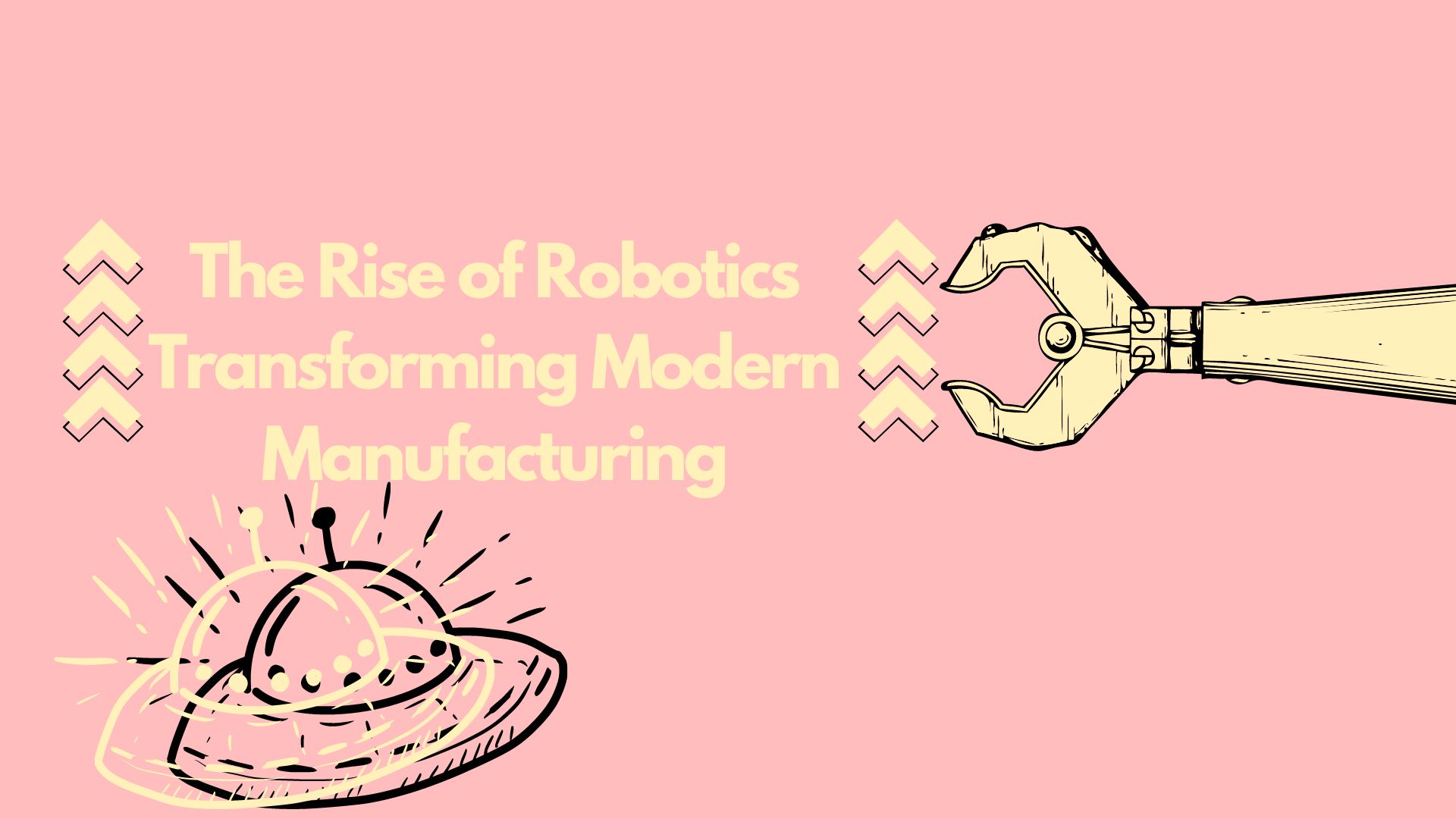Introduction
Robotics has become a cornerstone of modern manufacturing, revolutionizing the way products are designed, produced, and delivered. The integration of robots into manufacturing processes enhances productivity, precision, and efficiency, driving significant advancements in the industry. This blog explores the impact of robotics on manufacturing, the various types of robots used, and the benefits and challenges associated with robotic automation.
The Impact of Robotics on Manufacturing
- Increased Productivity: Robots can operate continuously without breaks, significantly increasing production output. Their ability to perform repetitive tasks with high speed and accuracy reduces cycle times and boosts overall productivity.
- Enhanced Precision and Quality: Robots are programmed to perform tasks with a high degree of precision, ensuring consistent quality in manufacturing processes. This reduces errors, minimizes waste, and enhances product quality.
- Cost Efficiency: While the initial investment in robotics can be substantial, the long-term cost savings are significant. Robots reduce labor costs, minimize material waste, and increase operational efficiency, leading to lower overall production costs.
- Improved Workplace Safety: Robots can handle hazardous tasks that pose risks to human workers, such as working with toxic materials, heavy lifting, and operating in extreme environments. This improves workplace safety and reduces the likelihood of workplace injuries.
- Flexibility and Adaptability: Modern robots are highly adaptable and can be reprogrammed to perform a variety of tasks. This flexibility allows manufacturers to quickly respond to changing market demands and production requirements.
Types of Robots Used in Manufacturing
- Articulated Robots: These robots have rotary joints and can range from simple two-joint structures to complex systems with ten or more interacting joints. They are commonly used for welding, material handling, and assembly tasks.
- Cartesian Robots: Also known as linear robots, Cartesian robots operate on three linear axes (X, Y, and Z) and are used for tasks that require precision and repeatability, such as CNC machining and 3D printing.
- SCARA Robots: Selective Compliance Articulated Robot Arm (SCARA) robots are ideal for tasks that require precise lateral movements, such as pick-and-place, assembly, and packaging operations.
- Delta Robots: Known for their high-speed capabilities, Delta robots are used in applications requiring rapid and precise movements, such as food packaging and pharmaceutical manufacturing.
- Collaborative Robots (Cobots): Designed to work alongside human workers, cobots are equipped with advanced sensors and safety features that allow for safe human-robot interaction. They are used for tasks that require a combination of human skill and robotic precision.
Benefits of Robotic Automation
- Scalability: Robots can easily be scaled up or down to meet production demands, making them ideal for manufacturers looking to expand their operations or introduce new product lines.
- Consistent Output: Robots deliver consistent performance without variations, ensuring uniformity and reliability in production processes.
- Speed and Efficiency: Robotic systems can perform tasks faster and more efficiently than human workers, reducing production lead times and increasing throughput.
- Reduced Human Error: Automation eliminates the risk of human error in repetitive and precision tasks, improving overall process accuracy.
- Data Collection and Analysis: Advanced robots equipped with sensors and data analytics capabilities provide valuable insights into production processes, enabling continuous improvement and optimization.
Challenges of Robotic Automation
- High Initial Investment: The cost of purchasing and integrating robotic systems can be substantial, posing a barrier for small and medium-sized manufacturers.
- Technical Complexity: Implementing and maintaining robotic systems require specialized technical expertise and training, which can be challenging for companies without in-house capabilities.
- Workforce Displacement: The introduction of robots can lead to concerns about job displacement among workers. It is crucial for manufacturers to invest in retraining and upskilling programs to support their workforce.
- Integration with Existing Systems: Ensuring seamless integration of robots with existing manufacturing systems and processes can be complex and requires careful planning.
Case Study: Robotics in Action
A leading electronics manufacturer, [Company Name], implemented robotic automation to enhance its production capabilities. Key initiatives included:
- Articulated Robots for Assembly: Deploying articulated robots on the assembly line to handle complex assembly tasks with high precision. This resulted in a 40% increase in production speed and a 30% reduction in defects.
- Collaborative Robots for Material Handling: Introducing cobots to work alongside human workers in material handling tasks. This improved ergonomics, reduced worker fatigue, and increased overall efficiency.
- Delta Robots for Packaging: Utilizing Delta robots for high-speed packaging operations, significantly reducing packaging time and improving throughput.
- Data-Driven Optimization: Leveraging data collected from robotic systems to analyze performance and identify areas for continuous improvement. This led to optimized production processes and reduced downtime.
These initiatives not only improved operational performance but also positioned [Company Name] as a leader in innovation and efficiency in the electronics manufacturing industry.
Conclusion
Robotics is transforming the manufacturing landscape by enhancing productivity, precision, and efficiency. The integration of various types of robots, such as articulated, Cartesian, SCARA, Delta, and collaborative robots, offers numerous benefits, including increased scalability, consistent output, speed, reduced human error, and valuable data insights. While the adoption of robotic automation presents challenges such as high initial investment, technical complexity, workforce displacement, and integration issues, the long-term benefits far outweigh these hurdles. As manufacturers continue to embrace robotic automation, they will be well-equipped to navigate the complexities of modern manufacturing and drive long-term success.









